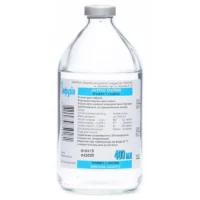Description
Tetraspan (poly (O-2-hydroxyethyl)) Solution for Infusions 6% 500 ml Vials №10
Ingredients
- Tetraspan contains poly (O-2-hydroxyethyl) starch, electrolytes (sodium, potassium, calcium, and chloride), and water for injections.
Dosage
- The recommended dosage of Tetraspan should be determined by a healthcare professional based on the patient’s condition, weight, and fluid requirements. It is typically administered intravenously.
Indications
- Tetraspan is indicated for the treatment of hypovolemia (low blood volume) and shock to restore circulating blood volume and improve tissue perfusion.
Contraindications
- Do not use Tetraspan in patients with known hypersensitivity to starch-based products, severe hyperkalemia, or severe renal impairment.
Directions
- Tetraspan should be administered intravenously under the supervision of a healthcare provider. The infusion rate and duration should be adjusted according to the patient’s response.
Scientific Evidence
- Studies have shown that Tetraspan is effective in restoring intravascular volume and improving hemodynamic stability in patients with hypovolemia and shock. Research by Sakr et al. demonstrated that Tetraspan was associated with a lower incidence of acute kidney injury compared to other colloids.
Additional Information
- Tetraspan should be used with caution in patients with impaired cardiac function or renal insufficiency. Monitoring of electrolyte levels and renal function is recommended during treatment.
Pharmacological Effects: Tetraspan works by expanding plasma volume, which helps improve cardiac output and tissue perfusion. It also has a colloid osmotic effect, which can help stabilize blood pressure in hypovolemic patients.
Clinical Trials: In a randomized controlled trial by Myburgh et al., Tetraspan was compared with crystalloids for fluid resuscitation in critically ill patients. The study found that Tetraspan was associated with a lower risk of mortality and less need for renal replacement therapy.



